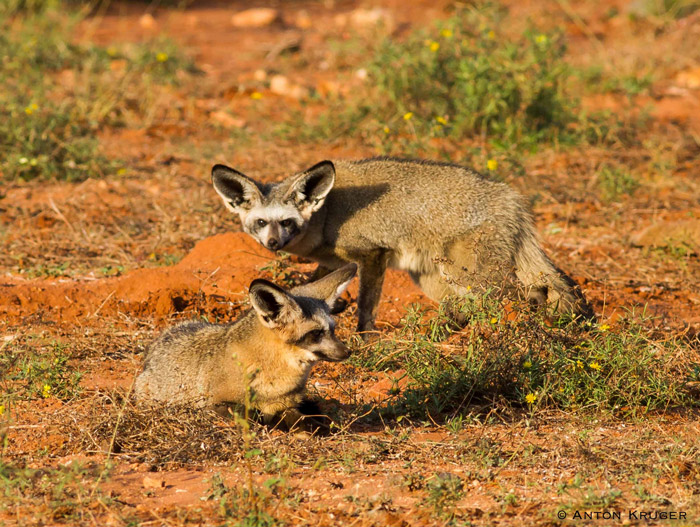Bat-eared foxes are cute and a popular sighting during African safaris. Guides often get asked the following questions about the cute and charismatic bat-eared fox:

Where should I look out for them?
They are fairly common throughout the dryer regions of Southern and Eastern Africa, where they are most often seen foraging at night or in the early morning in warmer months and during the day when the weather turns colder. Bat-eared foxes like to lie in the shade of acacia trees and favour short grasslands and arid savannah. They are often seen where domestic and wild ungulates have extensively grazed, but they venture into tall grass and thick shrub areas if threatened. They dig dens to raise their young and provide shelter from extreme temperatures and high winds. They are highly social, so if you spot one, watch for more.
What do bat-eared foxes eat?
Most bat-eared fox’s diet consists of small invertebrates such as ants, termites, spiders, scorpions and crickets. They will also eat small birds, mammals, reptiles, and even desert truffles.
What are the major threats to bat-eared foxes?
They are killed by larger carnivores such as lions, leopards, cheetahs, hyenas and African wild dogs if they can catch them. Pups are also vulnerable to smaller predators such as the black-backed jackal and the martial eagle. Humans are also responsible for the death of large numbers of bat-eared foxes due to traps and poison intended for predators. They are also hunted for their pelts.
Other threats to the bat-eared fox include diseases such as rabies, canine parvovirus and canine distemper virus, drought, and habitat loss.
Four fun facts about the bat-eared fox:
1. The bat-eared fox has extremely pointed teeth, which enables it to quickly and efficiently chew its meals to aid digestion;
2. They seldom drink water as they obtain most of the moisture they need from their food;
3. Unlike other canids, the male undertakes most parental care duties, while the female forages for food that maintains her milk production;
4. From a farmer’s perspective, bat-eared foxes play a vital role in controlling harvester termite populations, which farmers consider a pest.
To comment on this story: Login (or sign up) to our app here - it's a troll-free safe place 🙂.![]()








